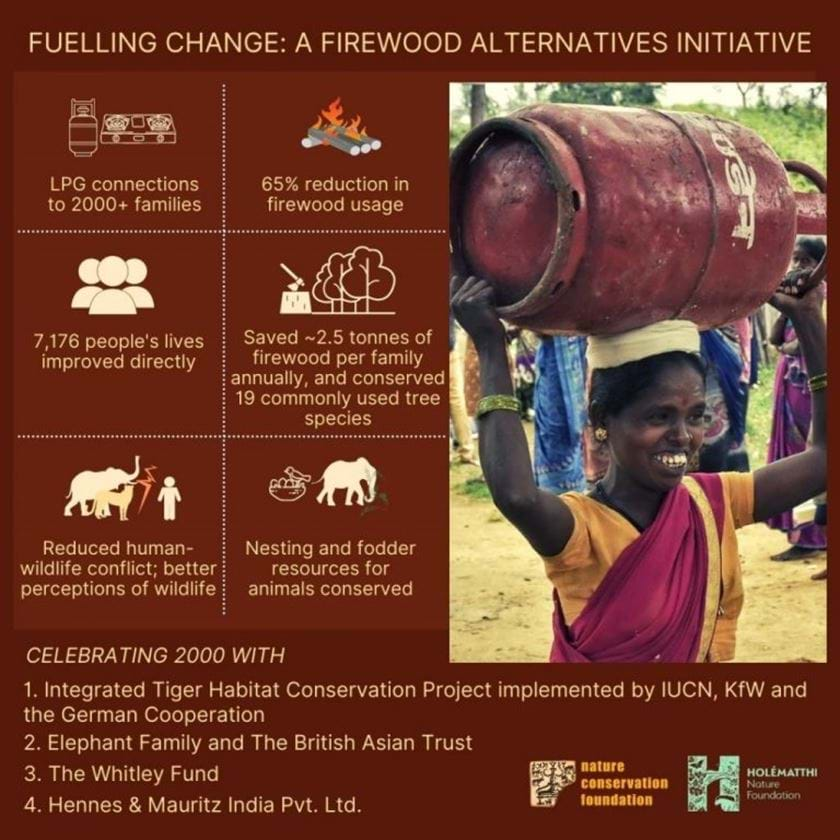No room for complacency as we face a triple planetary crisis
We are in the middle of a triple planetary crisis. Climate disruption. Nature and biodiversity loss. Pollution and waste. This triple crisis is threatening the well-being and survival of millions of people, animals and biodiversity around the world.
With the ongoing destruction and loss of biodiversity, protecting key landscapes and finding better ways for humans and wildlife to live alongside each other is our only option.
One million species have been threatened with extinction within decades, and the rate of destruction of the natural world poses catastrophic and imminent threats not just to wildlife, but to human health and survival. We work collaboratively with pioneering conservationists to find solutions that work for both people and wildlife.
Climate change
Over the last few years, India has suffered an erratic monsoon season, droughts, floods and wildfires as a result of climate change and the Intergovernmental Panel on Climate Change (IPCC) warns that the situation is likely to worsen. It’s anticipated that this will have severe effects on agriculture over the next few years with malnutrition and related health issues expected to rise. Wildlife is likely to suffer similarly, especially elephants who are sensitive to changing temperatures and need to drink large amounts of water every day.
As resources become scarcer and elephants are forced into close quarters with humans to find water, finding ways to encourage peaceful coexistence is becoming more important than ever.
Our long-time partner Dr Anand Kumar has Valparai in the Indian state of Tamil Nadu to allow humans and elephants to safely share limited space. When an elephant is sighted in the area, electronic billboards, announcements on public transport and mobile messages inform local people of its location so that they can avoid potentially dangerous encounters with the elephants.
Pollution
Pollution is also affecting South Asia’s ecosystems. Twenty elephants have died over the last eight years after eating plastic from a single village dump in Sri Lanka. Some effects are more insidious – 3.8 million humans die every year due to being exposed to smoke from their cookstoves.
In Karnataka with Dr Sanjay Gubbi of the Nature Conservation Foundation we’ve helped provide 2,000 families with safe, clean-burning LPG stoves. The project has significantly reduced women’s exposure to dangerous smoke from wood-burning stoves and improved their health.
But that’s not all. Prior to the project, families would gather firewood from the forest fringes, damaging biodiversity and potentially bringing them into life-threatening encounters with wildlife.
By removing their need to gather firewood, the biodiversity of the region is protected, the locals’ health is improved, and up to 5,000 tonnes less firewood is burned annually, reducing air pollution.

Biodiversity loss
In a grim example of how inextricably the three threats are linked, India’s changing climate has helped to speed the proliferation of Lantana camera. Lantana is an invasive, toxic weed which outcompetes native plants, resulting in ‘green deserts’ – areas of forest in which lantana vines have choked out all other life and are the only plants left. Due to its toxicity, elephants and other animals can’t eat it, leaving them starving. Reversing this loss of biodiversity is difficult; burning the lantana or using pesticides could damage other plants and if any of the root stock remains, the lantana will regenerate.
In Nilgiri Biosphere Reserve, where the Lantana problem is severe our project partner Tarsh Thekaekara has been experimenting with ways of making lantana fund its own labour-intensive removal. By processing lantana that can then be sold to the biomass industry, or processing cut stems to make furniture and other items that can be sold at a profit by local craftspeople.
Our CoExistence campaign, which saw elephants woven from lantana cross London’s Mall last year, raised awareness about human-wildlife conflict, raising funds for further conservation work, and for the Adivasi artists who created the sculptures.
Call to action
We can’t protect wildlife and their habitat without saving the world they live in from the deadly impacts of climate change, pollution and biodiversity loss. You can support our conservation work by signing up to our newsletter, donating, or helping spread awareness about our work through social media.
